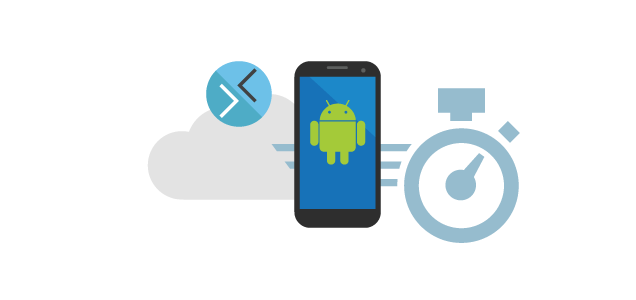- Android Virtual Device Mac Address
- Android Virtual Device Mac Os
- Android Virtual Device Apk
- Android Virtual Device Mac M1
Read ahead; we have a complete tutorial on how to install Android 11 on Mac, Windows,. Once finished, you will see a new Virtual Android Device on. Each instance of the Android Emulator uses an Android virtual device (AVD) to specify the Android version. Pressing Control (Command on Mac) brings up a. The Android Emulator is a Android Virtual Device which work as a real device. We use it in android studio for test and run our application. We can receive messages and incoming calls through AVD. The Android Emulator perform all function as like our android mobile. The android emulator receive high speed date from laptop or computer. Now to create a virtual device, run the following command: avdmanager create avd -force -name myTestDevice -abi googleapis/x86 -package 'system-images;android-23;googleapis;x86' -device.
I recently had trouble deleting old emulators from my AVD Manager.
The Android Virtual Device 'myEmulator' is currently running an emulator and cannot be deleted.

I did delete all the AVD processes that were running on my Mac OS X but still, the error persisted. (check if AVD is running through Activity Monitor on Mac or Task Manager on Windows)
To resolve this issue you need to locate the .android folder on your HDD. The location for

.android
 folder is different depending on what Operating System you have.
folder is different depending on what Operating System you have.macOS/Linux/UNIX
- Go to terminal.
- Goto root by typing : cd
- Goto Users/
- Now type : cd .android
- Now type : cd avd
You would see directories with emulator names. Delete all those emulator's (.ini and .avd) files from here that you do not want.
Alternate way: You need to unhide hidden folders on your Mac OS X to see .android folder. ( how to see hidden folders on macOS: link )
Goto Users Directory where Android Eclipse software has been installed. Now look for a hidden .android directory. Get into AVD dir and delete the file and folder that have your emulator name.
Go-to AVD Manager and refresh and you would see that the AVD is been deleted.
Windows XP, Vista, 7, 8
For Windows Operating system you will find .android folder under C:/Documents and Settings//.android
This can be C:/Users/.android if you are running Windows 7 or Windows 8
Now look for AVD folder and delete all folders and files (.ini files) that has the name of the AVD you do not want
Hope it helps!
- Copy entire directory using Terminal Command [Linux, Mac, Bash] - Linux
- macOS R installation steps - MacOS
- Change Google Chrome Browsers default download location - Chrome
- How to get more information about npm using brew command - HowTos
- Graph API error when querying BookingBusinesses - ErrorExceededFindCountLimit, The GetBookingMailboxes request returned too many results - Microsoft
This guide explains how to prepare the Android Emulator for testing your app.
Overview
Android Virtual Device Mac Address
The Android Emulator can be run in a variety of configurationsto simulate different devices. Each configuration is called a virtualdevice. When you deploy and test your app on the emulator, you selecta pre-configured or custom virtual device that simulates a physicalAndroid device such as a Nexus or Pixel phone.
The sections listed below describe how to accelerate the Androidemulator for maximum performance, how to use the Android Device Managerto create and customize virtual devices, and how to customize theprofile properties of a virtual device. In addition, a troubleshootingsection explains common emulator problems and workarounds.
Sections
Hardware Acceleration for Emulator Performance
How to prepare your computer for maximum Android Emulator performanceby using either Hyper-V or HAXM virtualization technology. Because theAndroid Emulator can be prohibitively slow without hardwareacceleration, we recommend that you enable hardware acceleration onyour computer before you use the emulator.
Managing Virtual Devices with the Android Device Manager

Android Virtual Device Mac Os
How to use the Android Device Manager to create and customize virtualdevices.
Android Virtual Device Apk

Editing Android Virtual Device Properties
How to use the Android Device Manager to edit the profile properties of avirtual device.
Android Emulator Troubleshooting
In this article, the most common warning messages and issues that occurwhile running the Android Emulator are described, along withworkarounds and tips.
Note
If you are using a Mac with an Apple chip, such as the M1, you will need to install the Android Emulator for M1 preview from GitHub.
After you have configured the Android Emulator, seeDebugging on the Android Emulatorfor information about how to launch the emulator and use it for testingand debugging your app.
Android Virtual Device Mac M1
Note
The sims 4 better feet mod. As of Android SDK Tools version 26.0.1 and later, Google has removed support for existing AVD/SDK managers in favor of their new CLI (Command Line Interface) tools. Because of this deprecation change, Xamarin SDK/Device Managers are now used instead of Google SDK/Device Managers for Android Tools 26.0.1 and later. For more information about the Xamarin SDK Manager, see Setting up the Android SDK for Xamarin.Android.